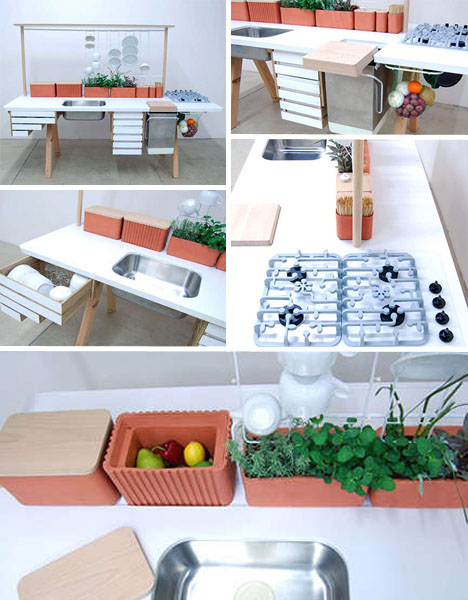“Going green in the kitchen” seems to be the battle cry for 2010, and whether you flip through a magazine, watch the evening news or surf the Web, an endless stream of advice is continually dispensed regarding how we can all make the transition with very little effort or financial investment. If it’s really so easy, then why haven’t more of us taken the plunge? Perhaps the short answer is that it requires us to break a pattern of behavior that for many is as instinctual as breathing, making the notion of running a sustainable kitchen seem far more complicated than it really is.
In the interest of making the process more digestible, here’s a very basic Green Kitchen 101 check list that every one of us can benefit from, even if we begin to incorporate just two or three points into our daily repertoire:
- Adhere to a diet that includes less meat and far more local, organic produce. In addition to being healthier, cooking at home (rather than purchasing convenience or fast food) generates less waste, which is easier on the environment and your wallet.
- Stop using disposable dishware/paper products and instead reacquaint yourself with washable, reusable and far more durable versions.
- Place all of your organic household food scraps in a countertop collection bin and then add them to an outdoor compost pile.
- Commit to using plant-based, biodegradable, chemical-free cleaning agents that contain no phosphates, either by whipping up homemade recipes or purchasing them from green-minded companies.
- Only use your dishwasher when it is filled to capacity, or if you prefer to hand wash, don’t turn the water on until after you have thoroughly scrubbed everything first.
- Recycle, repurpose, donate.
- Use high-quality kitchen tools that are designed to last a long time rather than cheap, poorly made versions that end up in the landfill in record time.
- Break yourself of the bottled water habit by installing a household/faucet-mounted water filtration system, or for a more affordable eco-option, use a BPA-free water-filtering pitcher such as Brita, since their filters are turned into 100% recycled Preserve products at the end of their usable life.
- Purchase household staples in bulk (which eliminates unnecessary packaging) and store them in reusable glass, stainless steel or ceramic containers rather than plastic.

The Flow2 Kitchen design